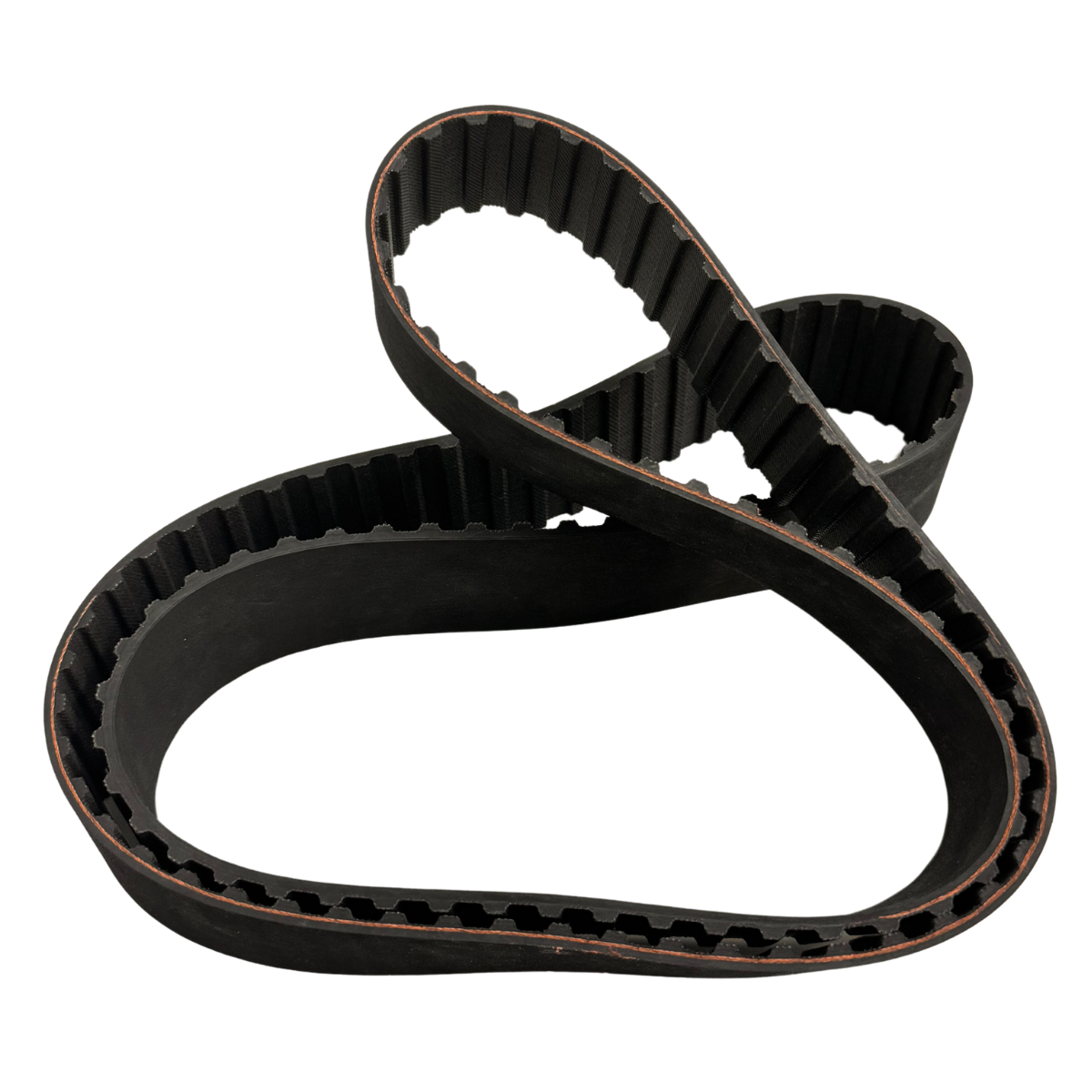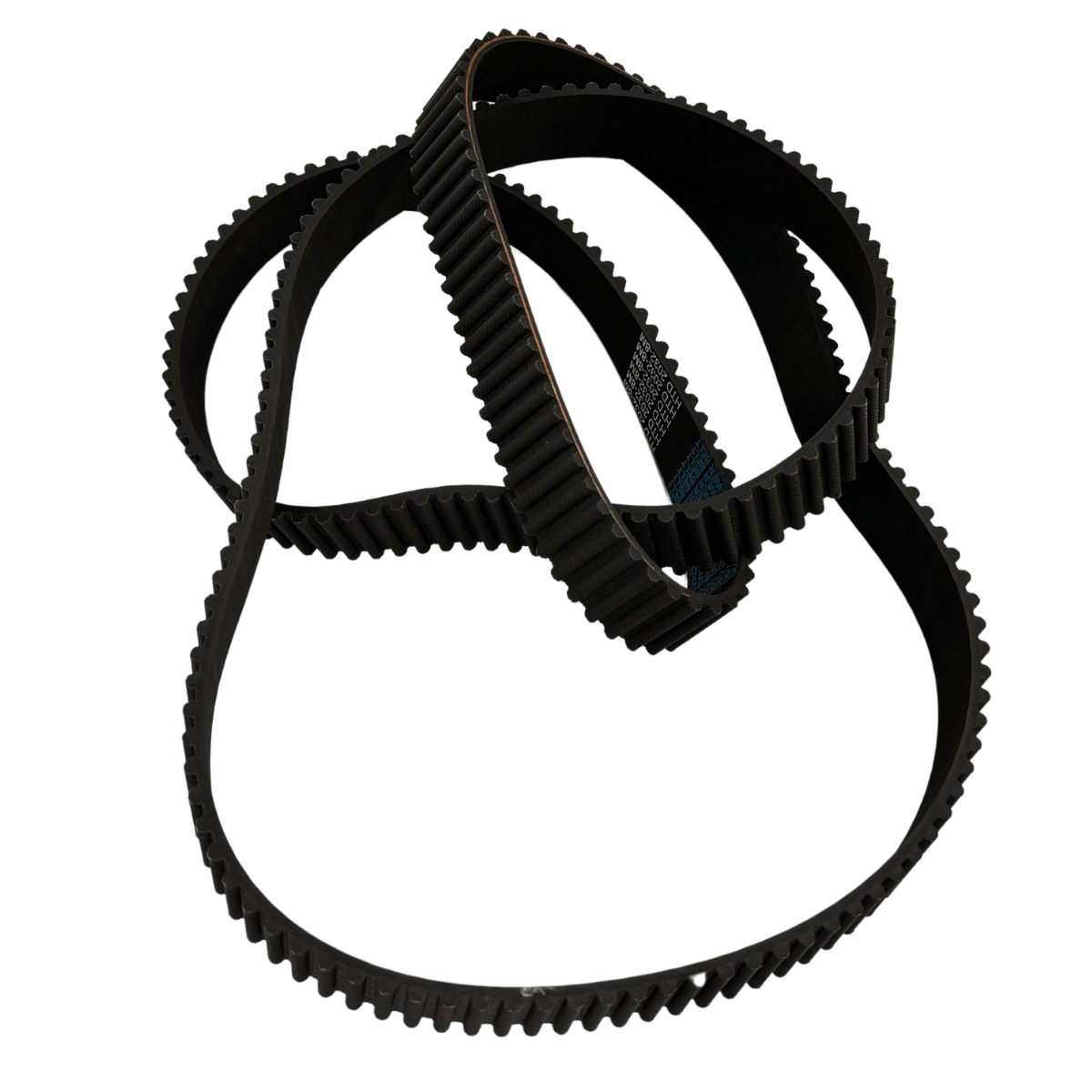A Comprehensive Guide to Standard Timing Belts and HTD Timing Belts
Vbeltshop on Sep 17th 2024
When it comes to power transmission in machinery, timing belts play a crucial role in ensuring smooth and synchronized operation. Two popular types of timing belts that you'll frequently encounter are Standard Timing Belts and HTD Timing Belts. In this blog, we’ll dive deep into the differences, applications, and benefits of both types, helping you make an informed choice for your machinery needs.

What Are Timing Belts?
Timing belts are an essential component in machines that rely on synchronized movement between different parts. Unlike traditional belts, timing belts are designed with teeth that mesh with the corresponding gear or pulley. This ensures that there’s no slippage, allowing for precise control of speed and power transmission.
Standard Timing Belts: Overview and Applications
Standard timing belts, often referred to as classical timing belts, have trapezoidal teeth. These belts are widely used in a variety of machinery, such as:
- Automotive engines: Ensuring that the camshaft and crankshaft move in sync.
- Printers and office equipment: Providing precise movement for components like rollers.
- Industrial machinery: Used in various applications that require exact timing of rotating parts.
Benefits of Standard Timing Belts:
- Reliability: Standard timing belts offer consistent performance in many applications, ensuring smooth operation over extended periods.
- Versatility: With a wide range of sizes and materials available, they can be used in numerous industries.
- Cost-effective: Generally more affordable than some specialized belts, they provide an economical option without compromising on quality.
HTD Timing Belts: A Step Up in Performance
 The High Torque Drive (HTD) timing belts are designed with a more advanced tooth profile, featuring rounded teeth instead of the traditional trapezoidal ones. This rounded profile allows for a higher level of load distribution, reducing wear and increasing the belt’s lifespan.
The High Torque Drive (HTD) timing belts are designed with a more advanced tooth profile, featuring rounded teeth instead of the traditional trapezoidal ones. This rounded profile allows for a higher level of load distribution, reducing wear and increasing the belt’s lifespan.
Applications of HTD Timing Belts:
- High-performance machinery: Used in industries where higher torque is required, such as manufacturing, robotics, and conveyors.
- Power tools: Providing smooth, reliable performance in power tools with high load demands.
- Automotive applications: Used in advanced automotive designs where precise torque distribution is necessary.
Benefits of HTD Timing Belts:
- Superior torque transmission: The design of HTD belts allows them to handle higher loads, making them ideal for heavy-duty applications.
- Reduced wear and tear: The rounded tooth design reduces friction, leading to a longer belt life and reduced maintenance costs.
- High resistance to stretching: HTD belts are less prone to elongation, maintaining their tension over time, which is essential for precision applications.
Standard vs. HTD Timing Belts: Key Differences
- Tooth Design: Standard timing belts have a trapezoidal tooth profile, while HTD timing belts feature a rounded profile, allowing for more efficient load distribution.
- Torque Capacity: HTD timing belts can handle higher torque loads than standard belts, making them the preferred choice for heavy-duty applications.
- Durability: HTD belts are generally more durable and longer-lasting due to their reduced wear and lower friction.
- Applications: Standard timing belts are widely used in everyday applications, while HTD belts are favored for specialized, high-performance systems.
How to Choose the Right Timing Belt
When selecting between standard timing belts and HTD timing belts, consider the following factors:
- Torque Requirements: If your machinery requires high torque transmission, an HTD timing belt is the better option.
- Load Conditions: For lighter loads, standard timing belts may suffice, but HTD belts should be used in high-load environments.
- Durability Needs: HTD timing belts offer superior durability, especially in applications with continuous or heavy use.
- Cost: Standard timing belts tend to be more cost-effective, making them suitable for general applications where extreme performance is not required.
Where to Buy High-Quality Timing Belts
If you’re looking for top-quality standard timing belts or HTD timing belts, visit vbeltmart.com. We offer a wide selection of timing belts from reputable manufacturers, ensuring you get the best performance and longevity from your machinery. Whether you're looking for precision in light-duty applications or high torque handling in demanding systems, we have the right timing belt for you.
By understanding the differences between Standard Timing Belts and HTD Timing Belts, you can ensure your machinery runs at peak efficiency and performance. Always choose the right belt for your specific needs, and never compromise on quality when it comes to critical components like timing belts.
Conclusion
Both Standard Timing Belts and HTD Timing Belts have their distinct advantages depending on the application. Standard timing belts offer reliability and cost-effectiveness for general purposes, while HTD belts are perfect for high-torque, heavy-duty applications where durability and precision are key. Make sure to choose the right timing belt for your machinery to ensure smooth, efficient, and long-lasting performance.
By optimizing this blog with keywords like "Standard Timing Belts," "HTD Timing Belts," "timing belt benefits," and "high torque belts," you can improve its chances of ranking well in Google searches, especially when users are looking for these specific products.


